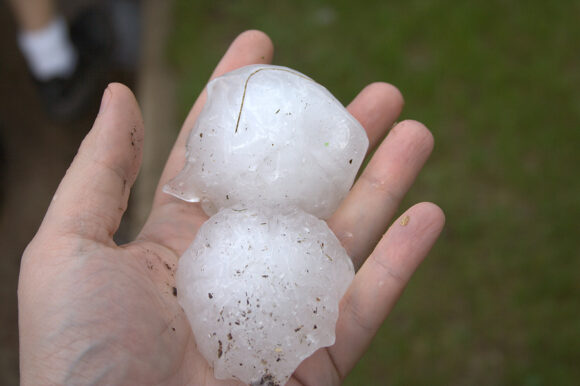There were 141 days with large hail that fell on more than 10 million single and multifamily homes in the contiguous U.S. in 2023, making it the highest number of days in 20 years, according to Corelogic’s 2024 Severe Convective Storm Report
This increase in severe convective storm has generated unprecedented number of insured losses over the entire year and affected millions of homes across the United States, according to the report, which details how severe thunderstorm risk is growing in the U.S
Texas led the list of states with the percentage of homes impacted by 1 inch or more of hail at 27%. Colorado followed with 11%, Illinois with 9%, Oklahoma 6% and Missouri 5%. These states made up more than 50% of homes impacted by these severe hailstorms.
When it came to insured loss, hail caused the greatest percent loss over other natural catastrophes such as tornadoes and straight-line winds, according to the report.
The report states the direct connection between climate change and severe thunderstorm activity in the U.S. is less clear due to combination of smaller-scale weather and ocean patterns, all of which influence weather across the country, and an incomplete historical record.
Jonathan Schneyer, a director of event response for Corelogic, offered some insight of the heavy costs whenever severe convective storms destroy homes in the U.S.
“If your home is hit by 2-3 inch hail and you have an older roof or a roof of poor condition…that is enough damage to where you might need to replace your roof entirely,” Schneyer said. “And given the inflationary pressures on roofing materials, a waiver that is needed for replacing a roof, it could be a $10,000 job.”
Corelogic’s report estimated that straight-line winds and hail from June 11 to 15 generated between $7 and $10 billion in insured loss. Hail alone was estimated to comprise 95% of the losses, which made it one of the biggest hail losses in history.
The report shows that asphalt shingles, one of the most common roof-type materials used throughout the U.S., experienced a 40% increase in cost over the past five years. Ceramic tiles, commonly used for roofing material, has increased by 26% since 2018.
The cost for labor in addition to materials has also had an impact. According to the report, since 2018, the costs for paying roofers, glazers, painters, plasters, and tile setters increased 17% to 18%.
Property risk is rising in the U.S with more homes being built every year. The cost to repair is increasing because of the inflationary pressures to all industries across the country. When these are combined with a historically active severe thunderstorm season, the losses could be substantial, according to the report.
Was this article valuable?
Here are more articles you may enjoy.


 State Farm Sued Over Policies Backed by Distressed Insurer PHL
State Farm Sued Over Policies Backed by Distressed Insurer PHL  Truckers Who Fail English Tests Get Pulled Off Roads in Trump Crackdown
Truckers Who Fail English Tests Get Pulled Off Roads in Trump Crackdown  ‘Super Roofs’ Are Rewarding Insurers, Cat Bond Investors and Homeowners
‘Super Roofs’ Are Rewarding Insurers, Cat Bond Investors and Homeowners  OpenAI And Microsoft Sued Over Murder-Suicide Blamed on ChatGPT
OpenAI And Microsoft Sued Over Murder-Suicide Blamed on ChatGPT 